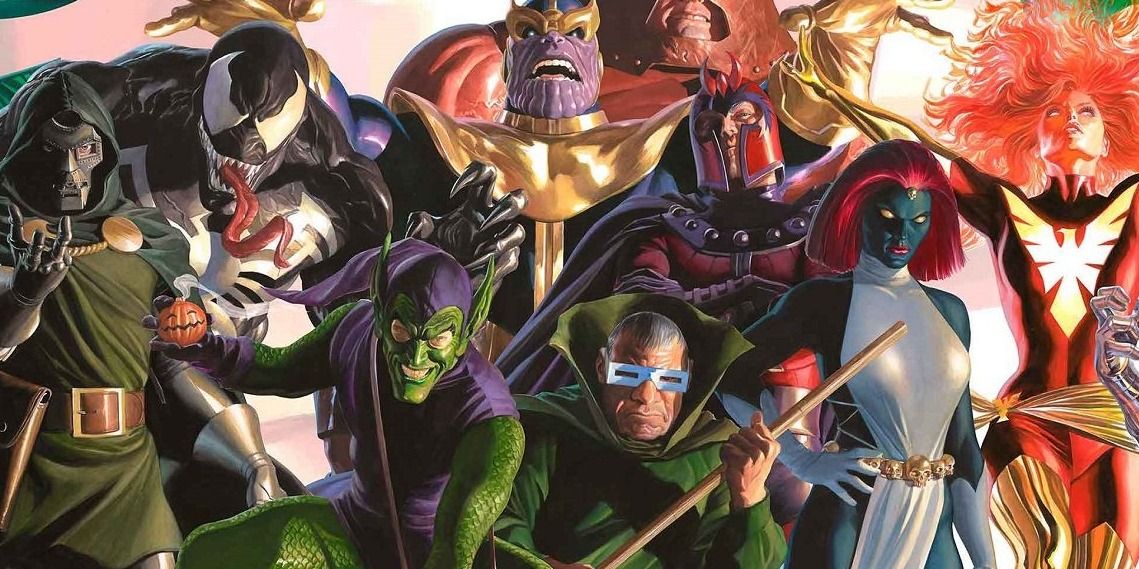Marvel superheroes have been gracing comic book pages ever since the 1930s, with the debut of the Human Torch, the Angel, the Masked Raider, and Ka-Zar in Timely Comics’ Marvel Comics #1. This issue also featured the introduction of Namor the Sub-Mariner, the first supervillain to combat the heroes that would ironically join their fight against evil in World War II. However, peace rarely lasts with this character as he frequently attacks human armies and heroes for fear of them taking over his undersea homeland. These conflicting behaviors lead many fans to consider him more of an anti-hero than a Marvel supervillain.Those fans rejecting Namor’s claim for this spot often argue that the first supervillain in the modern sense wouldn’t debut until Marvel’s revamp in 1961 with The Fantastic Four #1, created by Stan Lee, Jack Kirby, George Klein, Christopher Rule, Stan Goldberg, and Artie Simek. This issue featured the Mole Man, a subterranean human bent on taking over the surface world with his army of monsters. The character’s long history has seen him attack cities and kidnap numerous women in an attempt to both rule the world and receive adoration. Deciding which character fits this role comes down to how fans define the term “supervillain” itself.Comic book villains have been around since the first pulp stories were published in the early twentieth century. Most average evildoers range from bank robbers to disgruntled businessmen, especially in early comics. Yet the role of supervillain goes beyond these typical crooks and encompasses characters that exhume larger-than-life personas that present a formidable threat against superheroes. Namor’s role in Marvel Comics #1 fits nicely within this definition. His indomitable will and desire to lead an army against the surface world make him a formidable threat to superheroes and the world itself.RELATED: 15 Most Powerful Marvel Villains And Their Greatest WeaknessesRELATED: 10 Popular Marvel Villains (& Their Greatest Victory)
Marvel superheroes have been gracing comic book pages ever since the 1930s, with the debut of the Human Torch, the Angel, the Masked Raider, and Ka-Zar in Timely Comics’ Marvel Comics #1. This issue also featured the introduction of Namor the Sub-Mariner, the first supervillain to combat the heroes that would ironically join their fight against evil in World War II. However, peace rarely lasts with this character as he frequently attacks human armies and heroes for fear of them taking over his undersea homeland. These conflicting behaviors lead many fans to consider him more of an anti-hero than a Marvel supervillain.
Those fans rejecting Namor’s claim for this spot often argue that the first supervillain in the modern sense wouldn’t debut until Marvel’s revamp in 1961 with The Fantastic Four #1, created by Stan Lee, Jack Kirby, George Klein, Christopher Rule, Stan Goldberg, and Artie Simek. This issue featured the Mole Man, a subterranean human bent on taking over the surface world with his army of monsters. The character’s long history has seen him attack cities and kidnap numerous women in an attempt to both rule the world and receive adoration. Deciding which character fits this role comes down to how fans define the term “supervillain” itself.
Comic book villains have been around since the first pulp stories were published in the early twentieth century. Most average evildoers range from bank robbers to disgruntled businessmen, especially in early comics. Yet the role of supervillain goes beyond these typical crooks and encompasses characters that exhume larger-than-life personas that present a formidable threat against superheroes. Namor’s role in Marvel Comics #1 fits nicely within this definition. His indomitable will and desire to lead an army against the surface world make him a formidable threat to superheroes and the world itself.
#Supervillain #Marvel #Comics
Note:- (Not all news on the site expresses the point of view of the site, but we transmit this news automatically and translate it through programmatic technology on the site and not from a human editor. The content is auto-generated from a syndicated feed.))



